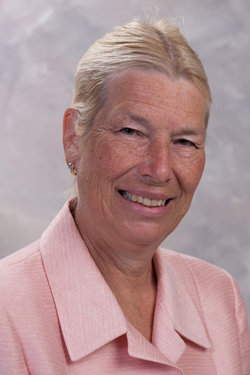Improving Care Through Simulation

In January of 2009, Captain C.B. “Sully” Sullenberger safely landed his disabled plane on the Hudson River. There is a remarkable picture of passengers standing on the wings of the airplane, waiting to be rescued. Amazingly, there were no major injuries among the 155 passengers and crew. In addition to their personal skills and experience, Captain Sullenberger and his team were able to draw on what they had learned during drills that simulated airplane water landings and engine failure.
Simulation promotes teamwork, communication and technical skills. Those with simulation training are better able to think quickly and logically to deal with the unexpected. There is good evidence in several disciplines that simulation training provides better results.
This same type of simulation training is already being applied to the training of nurses, physicians and allied health professionals. However, the planned Jump Trading Simulation and Education Center (JTSEC) will provide central Illinois with a whole new level of simulation opportunities. JTSEC is the result of Bill DiSomma’s $25 million gift to the University of Illinois College of Medicine at Peoria and OSF Saint Francis Medical Center.
What will the new simulation center mean for our community and for the health of those who live in central Illinois?
First, technical skills require practice to develop competency. The first nail you pound probably won’t be straight or perfectly positioned. In medicine, you cannot afford to make mistakes while you learn. Mannequins and task trainers allow students to practice everything from suturing to spinal taps to blood drawing to placing a needle in a joint. Only after they perform this simulation perfectly are they allowed to perform it on a real person. This assures patients of a competent clinician.
Some procedural trainers combine intellectual challenge with technical skills. These more complex devices resemble video games. Usually these devices are used to educate residents being trained in surgery. When the resident uses the device, simulated surgery occurs on the screen. If a vessel starts bleeding, the resident must both choose what to do and have the technical skill to complete the task. This more complex link between procedures and thought processes also strengthens performance and improves patient outcome.
In the care of a patient, particularly in an emergency, it takes more than technical skill and individual decision making. Communication among team members is critical. To teach this we can simulate an event, such as the stopping of a child’s heart, and then watch how the team responds. The simulated event is videotaped and the team is “debriefed” by watching the videotape with an instructor. Of course, we look for whether the team took the right actions and performed procedures correctly. However, we also look for leadership, attitude, teamwork and effective communication. Mercifully, it is rare for a child’s heart to stop, but when it happens, we want our teams to function perfectly.
Medicine uses increasingly complex technology and a vast array of interventions. However, patients still need to be comforted, counseled and informed. Sometimes empathy and concern are the skills patients most desire in their physicians. These skills can be taught through the use of standardized patients. In these simulations, a trained actor serves as the “patient.” For example, this is how the “telling bad news” scenario works. The student is given a script telling him or her that the “patient” has cancer and the student must tell the “patient” this result. The actor-patient responds to this news as per their script, and the resulting interaction is videotaped. After the session, the instructor and student debrief by reviewing the tape and making suggestions for improvement. The actor-patient also tells the student how he felt during the interaction with the student. This improves physician communication skills, a key component of medical care.
Our goal is that the “Jump Trading Simulation Center will be a leader in the training and education of medical professionals through the use of cutting-edge technology, simulated clinical scenarios and research on outcomes.” At JTSEC, we will research which devices and strategies provide the best outcomes for our patients. These outcomes include better health, but also shortened hospital stays, increased cost-effectiveness and improved patient satisfaction. We expect the simulation center to directly impact patients in Peoria and throughout the region. We also expect other simulation centers will benefit from what we create, resulting in better outcomes for patients across the country.
The new Jump Trading Simulation and Education Center will improve the health of central Illinois through better patient care. It will also expand our research in health outcomes as we study the impact of JTSEC programs on our region. What a tremendous opportunity for the College of Medicine and for our healthcare community. iBi

